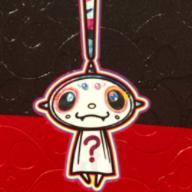筲箕灣點解叫做筲箕灣?
2006-12-19 1:17 am
筲箕灣點解叫做筲箕灣?要真實答案(最好用英文答)
回答 (3)
2006-12-19 1:22 am
✔ 最佳答案
請see以下"NAME"一段...有筲箕灣點解叫做筲箕灣的解釋Shau Kei Wan (Traditional Chinese: 筲箕灣) or Shaukeiwan, Shaukiwan is a town in Eastern District, Hong Kong. Literally, Shau Kei means a pail, and Wan implies that the town is developed along the coast. Nowadays it is a relatively densely populated town compared with some developing areas.
Contents[hide]
1 Name
2 History
3 Sights
3.1 Eastern District Tourist Trail (Shau Kei Wan Section)
3.2 Shau Kei Wan Main Street East
3.3 Hong Kong Museum of Coastal Defence
3.4 Shau Kei Wan Wholesale Fish Market
3.5 A Kung Ngam Shipyards
3.6 Temples
3.7 Tsung Tsin Church
4 Community
4.1 Shopping Centres
4.2 Public Facilities
4.3 Schools
4.4 Hospitals
4.5 Authority office
4.6 HK Jockey Club Off Course Betting Branches
5 Transportation
5.1 In the past
5.2 Tram
5.3 MTR
5.4 Bus
5.5 Mini-bus
6 Housing development
6.1 Implementation
6.2 Project Information
6.3 Development Content
7 Environment
8 See also
9 External links
[edit] Name
The name Shau Kei Wan comes from the bay where the town is located. The bay is so named because its shape looks like a Shau Kei (rice basket). The bay had another name in the past - Ngor Yan Wan (餓人灣, translates to "Harbour of Starving Men"). It is said that there was a ship of people forced to dock by a typhoon. They landed hoping to buy some food and found that there was no agricultural products at all in the place. They left almost starving. The name of the bay is changed to Aldrich Bay. It is named after a British navy captain who worked there. Shau Kei Wan is now the name of the town, while Aldrich Bay is the name of the bay. On maps in 1950s, Buffalo Bay is also marked, together with Aldrich Bay.
There is another story behind the name of Shau Kei Wan, which could be translated into "Pail Bay" directly in Cantonese. It is said that in the late Southern Song Dynasty, a man named Cheung Chun (張進) dropped a pail full of ancestral heirlooms into the bay as he sailed back to the area with the navy. The pail fell into sea just off the coast of the area now known as Eastern District.
A sadder story tells of a boatwoman, Chu Tee (朱蒂), who was widowed soon after getting married. She gave birth to a son, Ah Ha (阿蝦, literally little shrimp), after her husband's death. Ah Ha was a good boy who, tragically, lost his sight after catching smallpox. When he was 15, his mother fell ill. To support the family, Ah Ha became a beggar, sitting on the waterfront every day with a pail, until one day he was swept away in a violent storm. Only his pail was ever found. Chu Tee missed her son so much that she went insane, but Ah Ha's filial deed was immortalised in the name of Shau Kei Wan. However, this tale is viewed with suspision, due to the fact that it supposedly took place during the early Qing Dynasty. The modern area of Shau Kei Wan already appeared in Ming Dynasty naval maps under the name used today.
2006-12-19 1:24 am
Please refer to http://hk.knowledge.yahoo.com/question/?qid=7006050201227
2006-12-19 1:23 am
筲箕灣位於香港島的中心北岸之東,是香港最早期被開發的地區之一。自開埠以前,已經有漁民在此海灣居住。地區行政上,筲箕灣屬於東區。
筲箕灣道
地名起源
筲箕灣本來是一個海灣,因為水域很圓,像一個大筲箕,因而為名。不過,坊間亦有兩個傳說是與筲箕灣的地名起源有關。第一個傳說指於南宋末年,有一個叫張進的人隨海軍船艦到九龍半島一帶,經過現時的筲箕灣時,他不小心將他祖先給他的家傳之寶筲箕跌到海中,所以這個海灣就稱為筲箕灣。而另一個傳說則是於清朝初期,有一個叫朱蒂的漁民,結婚後不久丈夫就去世,並誕下一個遺腹子,取名作阿蝦。他雖然是一個好孩子,但後來因感染了天花而變盲。到了阿蝦15歲時,母親亦感染重病。為了養活母親,他便用筲箕於現時的筲箕灣行乞為生。後來有一日天氣異常惡劣,阿蝦被海浪沖走,只留下筲箕於岸邊。為紀念阿蝦的事跡,當地居民將這個海灣改名為筲箕灣。然而,由於筲箕灣這個地名,早於明朝萬曆年間編寫的航海圖《粵大記》中出現,故第二個傳說的可信性有限。
此外,筲箕灣亦曾被稱為餓人灣。傳說明朝時期,有一隊商船因颱風而被逼於現時的筲箕灣登陸。當他們找尋食物時,但卻無法找到,連當地居民也無法找到。結果他們在離開前都無法充饑,因此而戲謔這個海灣為餓人灣。
地理位置
筲箕灣位於鰂魚涌以東,柴灣以西。具體範圍西至康山道,東至香港海防博物館、鯉魚門渡假村及大潭道。值得留意的是,雖然鯉魚門度假村及鯉魚門炮台位於筲箕灣,但香港人一段所指的鯉魚門是位於觀塘區油塘。
而海晏街以西的筲箕灣西部,一般被稱為西灣河區,但太安樓以北的新填海區,一般稱之為鯉景灣;東區走廊以北的筲箕灣北部,一般被稱為愛秩序灣;阿公岩道一帶的筲箕灣東部,一般被稱為阿公岩。
交通發展
雖然筲箕灣人口不斷增加,但交通仍非常不便。區內一直都靠東大街及西大街兩條主要道路連接區內各處。而英皇道是筲箕灣對外的唯一通道。此外,位於柴灣的居民亦依靠柴灣道經筲箕灣前往港島各主要地區。
1904年,香港電車將筲箕灣與當時香港政府行政中心維多利亞城(今中環一帶)連繫起來。然而,由於北角至筲箕灣一段為單程軌道,加上電車班次非常疏落,故當時有一句俗語「英雄被困筲箕灣,未知何日到中環」。而當1960年代後期太安樓落成入伙,發展商更要在報章刊登廣告,影著大廈外的2號巴士車站,下書「每20分鐘有一班車往中環」,用以吸引人遷入。
筲箕灣的路面交通一向只靠主幹路英皇道與鰂魚涌及銅鑼灣等地連繫,然而隨著筲箕灣不斷發展,車流逐漸增多,引致路面非常擠塞。於八十年代興建地鐵時尤為惡劣。當時小輪公司甚至要開辦渡輪,由筲箕灣開往中環疏導人潮。這個情況直至八十年代中期地鐵及東區走廊相繼建成後,才得以大大改善。
[編輯]
著名地點
香港海防博物館
筲箕灣東大街
筲箕灣譚公廟
香港海防博物館
香港電影資料館
鯉魚門度假村
港島東體育館
鰂魚涌公園
[編輯]
公共房屋
明華大廈
興東邨
耀東邨
康東邨
愛東邨
東熹苑
東霖苑
東欣苑
東駿苑
東盛苑
東旭苑
東濤苑
[編輯]
交通
[編輯]
主要交通幹道
東區走廊
筲箕灣道
柴灣道
[編輯]
公共交通
地鐵
港島線:西灣河、筲箕灣
電車
巴士
新巴:2、2A、2X、9、14、81、82、720、720A、M722
城巴:77、85、99、529
過海隧道巴士:102、106、110、606、682、694
機場巴士:A12
小巴
綠色專線小巴
18、20、32、50、65、66、66A
紅色公共小巴
銅鑼灣 — 筲箕灣
筲箕灣 — 柴灣
筲箕灣 — 石澳
以上只列出全日行走的巴士及小巴路線
[編輯]
參看
東區 (香港)
鰂魚涌
西灣河
鯉景灣
愛秩序灣
阿公岩
杏花邨
柴灣
筲箕灣道
地名起源
筲箕灣本來是一個海灣,因為水域很圓,像一個大筲箕,因而為名。不過,坊間亦有兩個傳說是與筲箕灣的地名起源有關。第一個傳說指於南宋末年,有一個叫張進的人隨海軍船艦到九龍半島一帶,經過現時的筲箕灣時,他不小心將他祖先給他的家傳之寶筲箕跌到海中,所以這個海灣就稱為筲箕灣。而另一個傳說則是於清朝初期,有一個叫朱蒂的漁民,結婚後不久丈夫就去世,並誕下一個遺腹子,取名作阿蝦。他雖然是一個好孩子,但後來因感染了天花而變盲。到了阿蝦15歲時,母親亦感染重病。為了養活母親,他便用筲箕於現時的筲箕灣行乞為生。後來有一日天氣異常惡劣,阿蝦被海浪沖走,只留下筲箕於岸邊。為紀念阿蝦的事跡,當地居民將這個海灣改名為筲箕灣。然而,由於筲箕灣這個地名,早於明朝萬曆年間編寫的航海圖《粵大記》中出現,故第二個傳說的可信性有限。
此外,筲箕灣亦曾被稱為餓人灣。傳說明朝時期,有一隊商船因颱風而被逼於現時的筲箕灣登陸。當他們找尋食物時,但卻無法找到,連當地居民也無法找到。結果他們在離開前都無法充饑,因此而戲謔這個海灣為餓人灣。
地理位置
筲箕灣位於鰂魚涌以東,柴灣以西。具體範圍西至康山道,東至香港海防博物館、鯉魚門渡假村及大潭道。值得留意的是,雖然鯉魚門度假村及鯉魚門炮台位於筲箕灣,但香港人一段所指的鯉魚門是位於觀塘區油塘。
而海晏街以西的筲箕灣西部,一般被稱為西灣河區,但太安樓以北的新填海區,一般稱之為鯉景灣;東區走廊以北的筲箕灣北部,一般被稱為愛秩序灣;阿公岩道一帶的筲箕灣東部,一般被稱為阿公岩。
交通發展
雖然筲箕灣人口不斷增加,但交通仍非常不便。區內一直都靠東大街及西大街兩條主要道路連接區內各處。而英皇道是筲箕灣對外的唯一通道。此外,位於柴灣的居民亦依靠柴灣道經筲箕灣前往港島各主要地區。
1904年,香港電車將筲箕灣與當時香港政府行政中心維多利亞城(今中環一帶)連繫起來。然而,由於北角至筲箕灣一段為單程軌道,加上電車班次非常疏落,故當時有一句俗語「英雄被困筲箕灣,未知何日到中環」。而當1960年代後期太安樓落成入伙,發展商更要在報章刊登廣告,影著大廈外的2號巴士車站,下書「每20分鐘有一班車往中環」,用以吸引人遷入。
筲箕灣的路面交通一向只靠主幹路英皇道與鰂魚涌及銅鑼灣等地連繫,然而隨著筲箕灣不斷發展,車流逐漸增多,引致路面非常擠塞。於八十年代興建地鐵時尤為惡劣。當時小輪公司甚至要開辦渡輪,由筲箕灣開往中環疏導人潮。這個情況直至八十年代中期地鐵及東區走廊相繼建成後,才得以大大改善。
[編輯]
著名地點
香港海防博物館
筲箕灣東大街
筲箕灣譚公廟
香港海防博物館
香港電影資料館
鯉魚門度假村
港島東體育館
鰂魚涌公園
[編輯]
公共房屋
明華大廈
興東邨
耀東邨
康東邨
愛東邨
東熹苑
東霖苑
東欣苑
東駿苑
東盛苑
東旭苑
東濤苑
[編輯]
交通
[編輯]
主要交通幹道
東區走廊
筲箕灣道
柴灣道
[編輯]
公共交通
地鐵
港島線:西灣河、筲箕灣
電車
巴士
新巴:2、2A、2X、9、14、81、82、720、720A、M722
城巴:77、85、99、529
過海隧道巴士:102、106、110、606、682、694
機場巴士:A12
小巴
綠色專線小巴
18、20、32、50、65、66、66A
紅色公共小巴
銅鑼灣 — 筲箕灣
筲箕灣 — 柴灣
筲箕灣 — 石澳
以上只列出全日行走的巴士及小巴路線
[編輯]
參看
東區 (香港)
鰂魚涌
西灣河
鯉景灣
愛秩序灣
阿公岩
杏花邨
柴灣
收錄日期: 2021-04-13 00:23:15
原文連結 [永久失效]:
https://hk.answers.yahoo.com/question/index?qid=20061218000051KK02295

